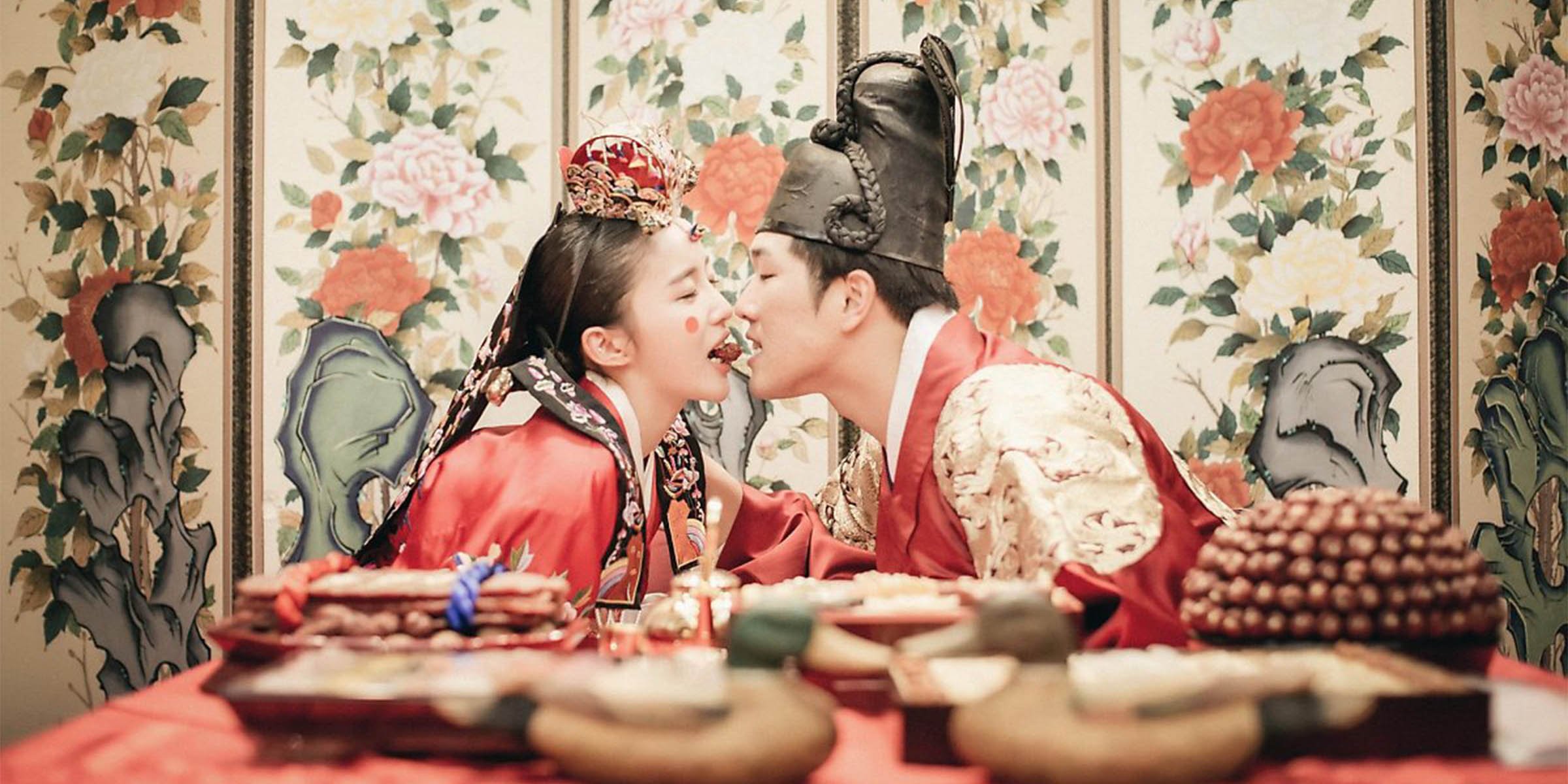Weddings in Korea: Part 5 Pye-baek (폐백)
After the main wedding ceremony is over, all the guests return home, leaving the closest family of the bride and groom to wrap up the big day. The most traditional way to end the wedding is to hold pye-baek (폐백) which is a traditional ending of the wedding ritual. It usually takes place in a smaller room prepared in advance by the venue. Pye-baek is a traditional ritual of saying hello to the groom’s family, and comes from Korea’s history of the bride usually having had to live as part of the groom's people. Today, however, it has become a step some couples include as part of their wedding ceremony to receive formal blessings and welcome from the groom’s family.
During pye-baek, couples wear what is called hwarot (활옷), which is a form of clothing of jeogori (저고리), or a shirt with wide sleeves and drape skirt. It was worn during the Goryeo and Joseon Dynasties by the queens and for special occasions by the commoners as well.
Historically, pye-baek includes foods that the bride’s mother packed for her considering the distance and environment so that the foods didn’t rot or go bad on her way to the groom’s house. The foods consisted of things like dried/sweetened dates and chestnuts. Today, the pye-baek table is filled with not just dates and chestnuts, but also hand-cooked meat jerky, a chicken, gu-jeol-pan (구절판), a dish of nine different anju (안주, small finger foods or snacks which you eat with alcohol or other beverages), and more, all representing different wishes. There are also specific orders on how the pye-baek ritual is performed.
The dates are given first to the father-in-law as a way of wishing for the well-being and healthy offspring. The meat jerky is given to the mother-in-law to imply love and respect for the in-laws. Gu-jeol-pan, the nine dishes of anju, is for the father-in-law if he prefers to have a drink and represents completeness or sufficiency, wishing good luck and wealth for the bride and groom.
The bride has to perform the Big Bow (the Formal Bow) to the in-laws and pour their glass with alcohol, usually a clear rice wine. As the last step, the in-laws throw the received dates and chestnuts into the bride’s skirt. The dates have seeds which, in history, represent sons, and chestnuts, which do not have seeds, represent daughters. Then they share a few words expressing warm welcome and advice about married life.
Today, as a price of the bowing, the in-laws give the bride money. This money also is a way to show their appreciation and welcoming the bride. In the past, it was only the bride who performed the entire pye-baek process, emphasizing more the idea of the bride becoming part of the groom's family. Today, however, it’s both the bride and groom who participate in this ritual together. Some couples often skip this step as its history is considered deeply male-centric.
Instead of this traditional pye-baek ending, many now prefer to have a casual get-together as a post-wedding ritual in the style often seen in western culture weddings. My best friend rented out a small pub in Seoul and spent time connecting with her friends. I, personally, made a reservation for a room at the bar located inside the hotel we got married in for a small get-together with a few of my friends (about five to seven people) who took part in making our wedding more special, such as those who made the address or performed a celebratory singing, and caught the bouquet. I spoke a few words thanking them and we all had a glass of champagne and ended the night.
Korean wedding scenes are changing rapidly and they are all different depending on the styles of the couple. In the past, the idea of marriage was the daughter becoming the groom's family. It was about having to take over the house with housework and chores as the new housewife. Today, the idea of the daughter leaving her family to become the groom’s family seems to be fading slowly, but still exists beneath the surface. Before I got married, I personally heard my grandmother constantly telling me that I will be leaving and not going to be part of my parents' family. My parents disagree with the idea and don’t believe in it, but seem to think that it’s the reality. In conclusion, marriage in Korea is not so much about just two people falling in love and tying the knot—it's about two families becoming one large family. This is something that is inevitable in Korea largely because of the history of viewing marriage as starting a family and carrying on the family name rather than focusing on it as a life achievement of two people. The idea is still there, but the important thing is that the young couples no longer think that way anymore. A lot of young couples prefer to have simpler and smaller weddings these days in order to avoid unnecessary steps and spending. All the wedding preparation and processes are heavily tailored to suit the taste and styles of the bride and groom, which I personally believe is smarter. At the end of the day, it is the bride who has to spend the rest of her life with the groom and the groom who will live with the bride for the rest of his life.
Edited by Kelly Sipko




